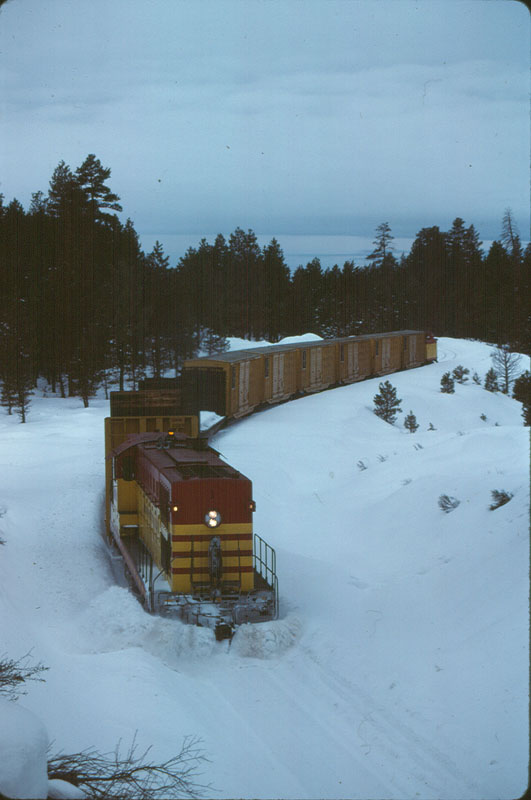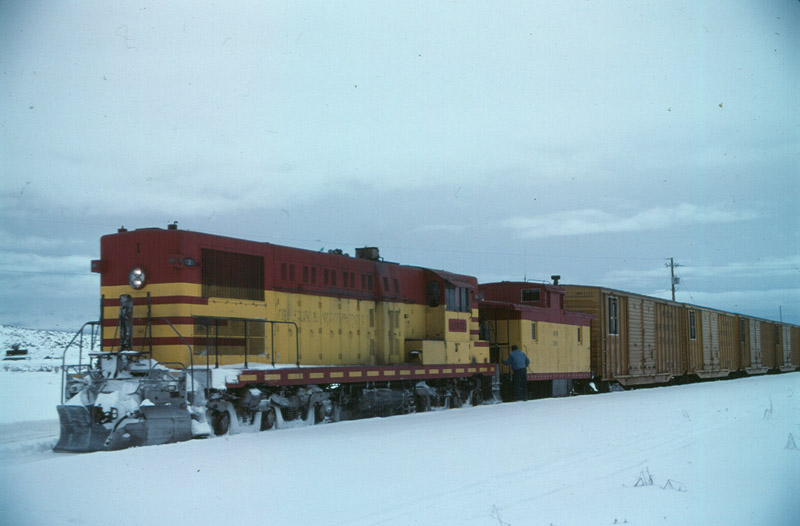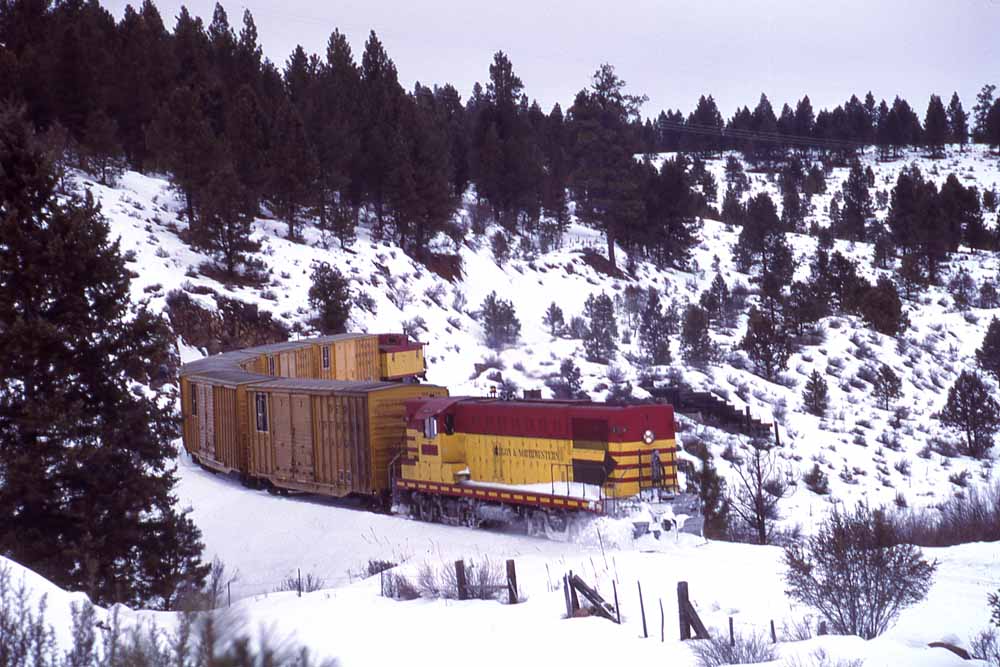|
Oregon & Northwestern Railroad 2nd to Last Train to Seneca |
|
|
|
A series of abnormally wet winters in the early 1980's caused water levels in Malheur and Harney Lakes to rise to record levels. By the early months of 1984 the rising waters were threatening to inundate Union Pacific's Burns branch. UP put all shippers in Burns on notice that it would end service to Burns when the water reached the level of the ties. The imminent closure of the Burns branch put the future of the Oregon & Northwestern in serious jeapordy, as the Burns branch provided the only connection to the outside world. By this point the O&NW had been reduced to a switching road, with most operations confined to switching the Edward Hines sawmill for the railroad's corporate parent and the other shippers around Burns on a contract basis for Union Pacific. The small planing mill in Seneca barely warranted the one train the O&NW ran each week to serve it. News of the impending closure of this railroad prompted several railfan photographers to make the trek to Burns to capture the O&NW. Wayne Monger was one of them, with his visit coming on 23 February 1984. Wayne photographed what proved to be the second to last O&NW freight to go north to Seneca; the last train ran on 6 March 1984, and Union Pacific suspended all service to Burns two days later. The O&NW passed into history a short time later. |
|
|
 |
|
Locomotive #1 leads the 2nd to last freight rolls north past the boarded up Union Pacific Burns depot. |
|
|
 |
|
A series of storms had dumped 2 feet of snow on the mountains north of Burns in the week or so since the last train ran. The #1 is seen here at Poison Creek Summit, nearing the south portal of the tunnel. |
|
|
 |
|
The 2nd to last train is seen here switching in the Seneca yards. |
|
|
 |
|
After completing the switching chores the #1 departed southbound back towards Burns, leading a consist made up exclusively of O&NW incentive per diem boxcars. The train is approximately 4 miles south of Trout Creek and is fighting both the grade towards the summit and a foot of fresh powder. The railroad once crossed this drainage with a trestle, and one of the former abutments can be seen just to the right of the locomotive. |
|
|